My travel to the tropical paradise – Phuket introduced me to a gem that shone brighter than the blue seas around – the iconic Siam Niramit show.
An extravagant celebration of Thai heritage, the Siam Niramet show is a kaleidoscopic spectacle that is sure to leave an indelible mark on any visitor.
Phuket has a great reputation as being Thailand’s famous island teeming with vibrant nightlife, stunning beaches, and an irresistible culinary scene. A journey to this tropical paradise promises a medley of unforgettable experiences, tantalizing your taste buds with a spectrum of delightful food, luring you to its sun-drenched beaches, and engulfing you in the pulsating beats of its nightlife.
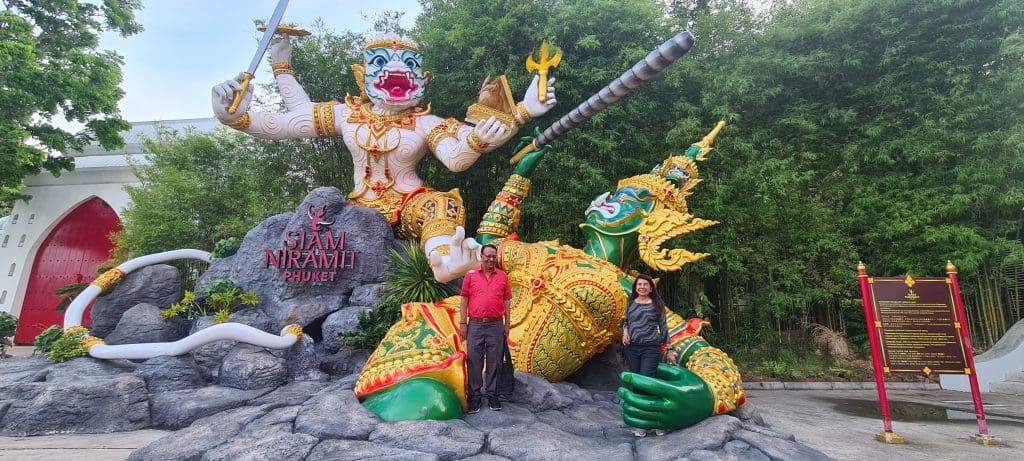
And with so much and more to experience and enjoy, I was completely bowled over by the half-day tour spent in a Thai Cultural Experience that transports you back in time, immersing you in the rich tapestry of the region’s history and culture. It transcended beyond the realms of time, becoming a vibrant tableau of Thailand‘s rich culture and heritage, its ancient traditions and folklore, and its reverence towards the divine.
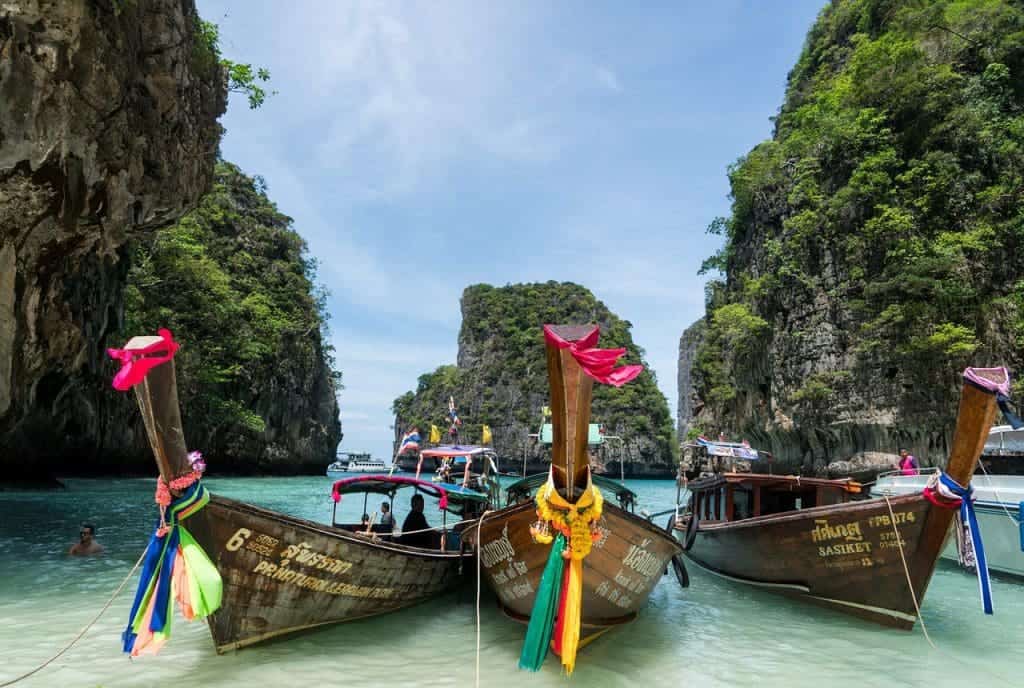
Timeless Traditions: 100-year-old Thai villages
Our experience began with a tour of a carefully recreated century-old Thai village. Each corner of the village personified a different region of Thailand, encapsulating the essence of a bygone era. The architecture, the climate, and even the social structures were reminiscent of the cultural fabric that has been woven over centuries.
I witnessed the unique architectural style and lifestyles of the villagers, all influenced by the local geography, climate, and social aspects of each region.

In the Central Plain, the houses are raised high to avoid flooding during the monsoon. The Northeast, dominated by highlands and less fertile soil, has homes that are smaller, simpler, and often elevated from the ground. In the South, fishing activities reign, and the people enjoy their spicy cuisine.
Stepping into the 100-Year Thai Village in the Central Plain is like embarking on a journey back in time. From the moment I enter, I’m captivated by the architectural brilliance and wisdom of the ancient Thai people, who designed their houses in accordance with the geography, climate, and social aspects of each region.

During the dry season, the traditional Thai house is conveniently located on fertile lowland soil. But here’s the genius part, as monsoon season swings around, the river overflows and the houses, already elevated, become safe havens. The ground floor, now vacated, stores fishing and farming equipment.
The rivers and canals that slice through the central plain offer a unique mode of transport. Each house possesses its own pier, allowing locals to navigate their way around using boats. The community activities here are delightful – weaving traditional fish decorations from palm leaves, tasting authentic Thai rice and coconut snacks, and of course, boat rides!

Shifting gears, my next stop is the 100-Year Thai Village in the Northeast. Again, geography dictates the lifestyle here. The Northeast’s highlands aren’t as agriculturally friendly as the Central Plains, meaning the locals tend to be less wealthy. Their houses are simple yet resourceful, elevated above the ground with spaces below for storing food and fermented products like fish. What stands out here is the infectious joy of the community.

They’re always celebrating, gathering for feasts, sharing food, and creating a sense of warmth that’s truly contagious. Heading south, I explore the 100-Year Thai Village in the South. The villagers here live a life imbued with the flavour of the sea. They’re fisherfolk who love spicy food and gathering for dinner. Their choice of entertainment? “Nang Talung”, a traditional shadow play. And don’t even get me started on their Hula Dance – it’s really magnetic!

During the tour, I come across Muay Thai, Thailand’s national sport and ancient martial art. With roots in “Muay Boran,” it originated as a form of self-defence for weaponless soldiers. In fact, it’s said that Muay Boran played a part in keeping Thailand the only Southeast Asian nation that was never colonized. In the 1700s, Muay Thai transitioned from battlefield to sport, with soldiers training during peace times. No rounds, no time limits, and rarely a referee – it was survival of the fittest.
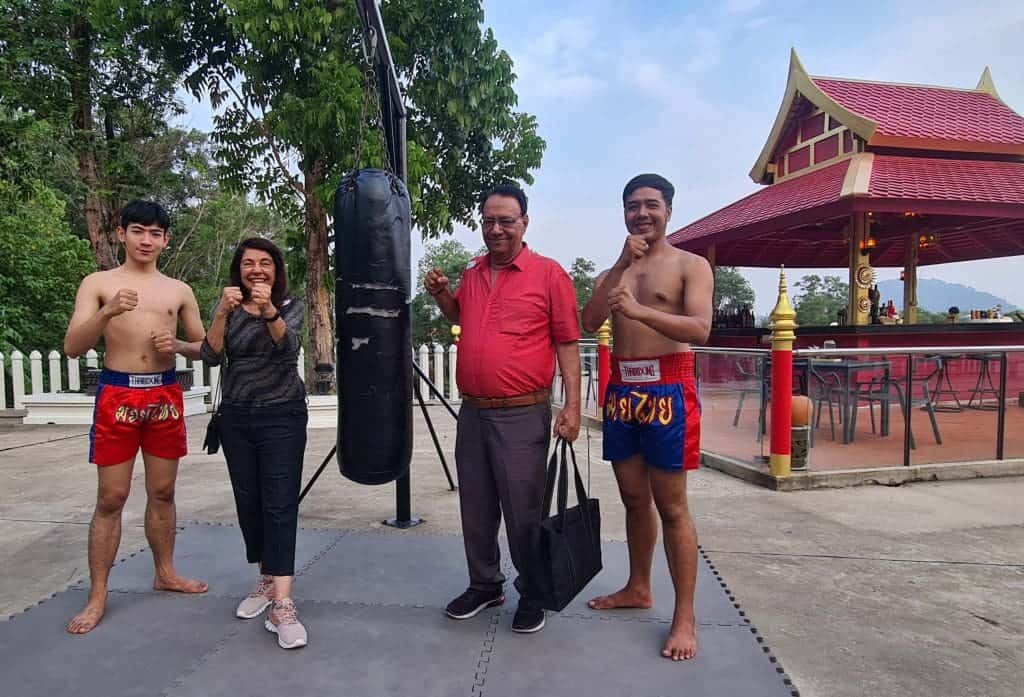
One story stands out. In 1774, after the Burmese invasion of the Ayutthaya kingdom, Nai Kanom Tom, a Thai prisoner, was chosen to fight against the Burmese champion. He knocked him out but the win was deemed invalid due to a supposed distraction by the music. Undeterred, Nai Kanom Tom faced nine more fighters and took them all down, single-handedly. The impressed Burmese King granted him and all his fellow Thai prisoners freedom. This victory is celebrated annually in Thailand on March 17th – Muay Thai Day. The tour is without a doubt, a definitive must-see, an enriching experience that beautifully articulated the spirit and essence of Thailand.
An outdoor Amphitheater with great performances
As dusk fell, the ambient music began to resonate through the outdoor amphitheatre, summoning us to several outdoor breathtakingly beautiful performances. Dancers draped in colourful traditional attires swayed and pirouetted, embodying legends, gods, and goddesses of Thai lore. The mesmerizing display seemed to bridge the gap between the past and present.
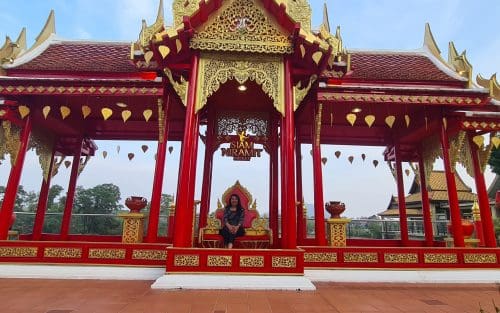
Finally, the climactic moment arrived. The grand finale – a 90-minute spectacle – was a theatrical marvel that encapsulated Thai culture and history in an electrifying dance and musical show.

The Siam Niramit in Phuket was not merely a show; it was a mesmerizing experience that unfolded like an elaborate storybook.
Spectacular Siam Niramit Phuket Show
As the curtains parted on a vast stage with special effects, a fantastical adventure awaited me at one of the world’s finest performances, the renowned Siam Niramit Show, The state-of-the-art stage effects were surreal, sending me spiralling back in time, a willing passenger in a vibrant time machine. I felt history unfold before my very eyes, so lucid, so alive, so teeming with energy.
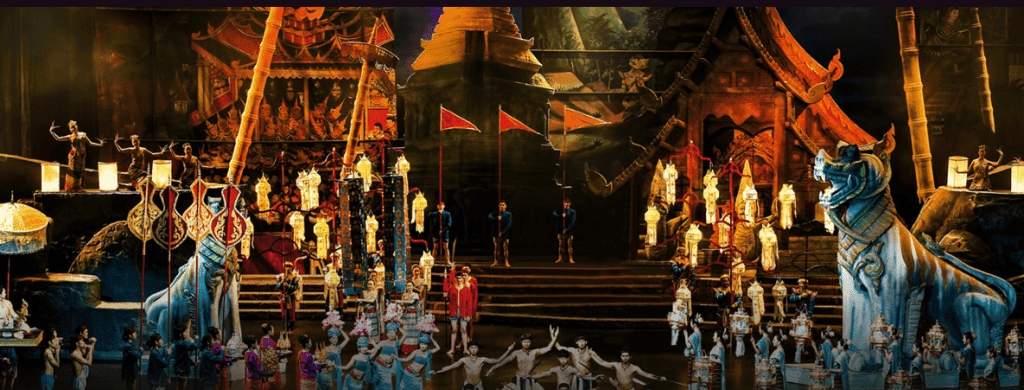
This show was my gateway to the rich, intriguing past and vibrant culture of Thailand. Witnessing a grand performance on a colossal stage that stretched 65 meters wide, plunged 40 meters deep, and towered 10 meters high, was beyond incredible.
Over a hundred performers swirled and danced in front of my awestruck eyes, wearing a dazzling array of 500 costumes. More than 100 resplendent set pieces and artistic backdrops filled the scene with overwhelming realism. The special effects, like the sudden appearance of a river on stage and the realistic flight of angels, were the cherries on top of an already magnificent spectacle. I can assert with certainty that the Siam Niramit Phuket Show is a must-see!
Each performance, each scene was enriched with artistic backdrops and astonishing special effects.
I took a deep dive into the lore of the Siam Niramit Show, focusing particularly on the depiction of Siva, the sacred Thai belief. Siva, known as Shiva in India and “Phra Siwa” or “Phra Isuan” in Thailand, holds an essential place in the cultural ethos of both countries. In Thailand, this deity is associated with the cycle of creation, preservation, and dissolution – each phase is intrinsically tied to the process of destruction and transformation. Far from being negative, this is viewed as a necessary, harmonious part of existence.

The image of Siva, armed with four different symbols, speaks volumes about Thai culture. Each arm cradles an element, a trident symbolizing Siva’s power, a drum echoing the sound of the universe, a flame signifying the transformative power of destruction, and the final arm raised in blessing. This lore is brought to life during the vibrant “Phi Ta Khon” festival in the town of Dan Sai, where celebrants wear flamboyant masks and costumes, many depicting Siva.
The Siam Niramit show illuminated my understanding of Siva, or as the Thai people know him, Phra Siwa or Phra Isuan. Although a prominent deity in Hinduism, his influence has travelled far and wide, resonating even in Thailand.
The Thai people attribute Siva with the power of destruction and transformation, critical elements in the cycle of life. This aspect of their belief was beautifully illustrated in the “Phi Ta Khon” festival dedicated to Siva. The festival was a riot of colours, marked by elaborate masks and costumes, many of which depicted Siva and other Hindu gods. It was fascinating to see how religious beliefs flow across different cultures, and how they evolve and adapt over time.

As I soaked in all these experiences, I could not help but marvel at the fluidity and dynamism of religious beliefs and practices. Siva may have originated in ancient India, but his influence and significance have resonated across cultures, adapting, and evolving with time.
A journey across time and cultures
As a cultural traveller, the Siam Niramit show was a revelation. It wasn’t just a spectacle to be watched, but an engaging narrative to be experienced. With its world-class performances, mesmerizing effects, and captivating storytelling, the Siam Niramit Show unfolds an evening of unforgettable enchantment and grandeur.
My visit to the Siam Niramit Show was not just an evening of enjoyment; it was a journey across time and cultures, a journey that I will treasure forever.
FAQs
- Q What is the meaning of Siam Niramit?
- A. Siam Niramit meaning? Well, it’s a fusion of two words, each bearing significant importance. “Siam” is the historical name of the Thai Kingdom, dating back to the Ayutthaya Period. “Niramit”, a Thai term, translates to “created by magic”. Together, Siam Niramit is a spellbinding show that magically breathes life into the rich history, culture, traditions, and beliefs of the Siamese people. It is a spectacle that celebrates numerous Thai festivals and the unique lifestyle of the people of Siam.
- Q. Where is the show performed?
- The show is performed at the Siam Niramit Theater, which has locations in both Bangkok and Phuket, Thailand.
- Q. How long is the show?
- A. The show is approximately 80 minutes long, excluding pre-show attractions and the buffet dinner (if you opt for it).
- Q. What time does the show start?
- A. The show in Bangkok and Phuket starts at 8:00 PM daily. However, gates open at 5:00 PM, offering guests an opportunity to enjoy pre-show attractions.
- Q. What should I wear to the show?
- A. There’s no strict dress code for the show, but casual or smart casual attire is recommended. Please note that Thai temples and royal court scenes require respectful attire.
- Q. Is there an interval during the show?
- A. No, the show is performed without an interval.
- Q. Can I take photographs during the show?
- A. To respect the performers and for the enjoyment of all guests, photography and video recording are not allowed during the performance. However, you’re welcome to take photos in the other areas of the complex.
- Q. Is the show performed in English?
- A. While the performance is largely non-verbal, it is very visual and can be understood and appreciated by people of all languages. Some scenes have brief introductions in English and Thai.
Read More: Latest



